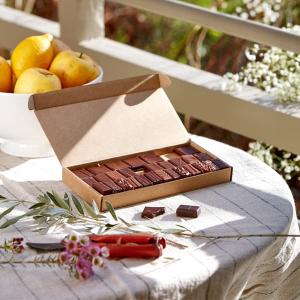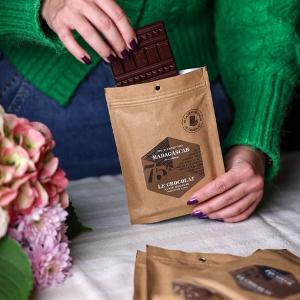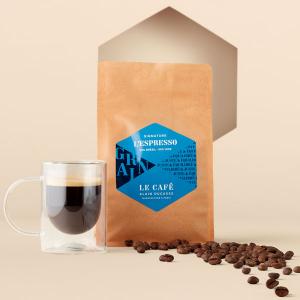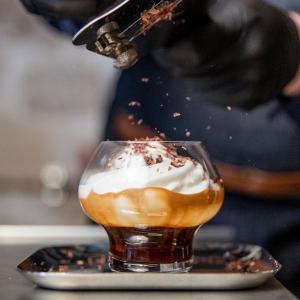The making of chocolate
Step 1: Selecting the beans

Alain Ducasse and his artisans chocolate makers selected cocoa beans based on their purity as much as their personality: sourced from a dozen locations, resulting in as many identities and unique flavours. Each bean is worked according to its character: more or less conching, light or intense cooking…
Step 2: Harvesting, fermenting and drying

The cocoa pods are harvested twice a year. Once opened with a machete, the beans are sorted and then left to ferment for 3 to 6 days to oxidise the mucilage (the white, sweet pulp that surrounds the beans) that endows the cocoa bean with its first organoleptic properties. The beans are then dried in the sun and packed in 70kg sacks for transport.
Step 3: Roasting to grinding

Roasting is a key step in the manufacture of chocolate because it increases and reveals it’s aromas. Cooking should be at the exact temperature with perfect homogeneous rotation so the bitterness, sweetness, toasted or smoked flavour of the bean is revealed. Roasting is carried out at approximately 120°C and lasts for 20 to 30 minutes. Once roasted, the beans are burst open and coarsely crushed in the cocoa bean breaker, or tarare. Pod residues are then removed by the use of a bellow system.
Step 4: Crushing to refining

The nibs obtained from the cocoa bean breaker are first crushed on a mill between two millstones. Heated by friction, the cocoa butter melts and transforms into cocoa paste. This granular, acidic paste is then mixed in a kneading machine with sugar and milk powder (for milk chocolate). Through the rollers of the main crusher, the cocoa paste is crushed until its particle size is reduced to 20 microns. Several trips back and forth between the kneading machine and the crusher are necessary to obtain the required texture.
Step 5: Conching-refining

To give the chocolate its fluidity and smoothness, whilst eliminating the residual acidity resulting from fermentation, it is subjected to the mechanical action of the conche. Regularly shaken, the crushed powder heats up. Acidity and moisture disappear. The mixture liquefies and becomes more homogenous. The process can last from 10 to 48 hours, depending on the machines used and the origins of the beans.
Step 6: Tempering and moulding

The chocolate running from the conch must be cooled for it to stabilise. This step is also known as ‘tabling’ as chocolate is traditionally cooled on a marble countertop. Once tempered, the chocolate is poured into moulds, blocks or bars, unless it is transformed into ganache, poured as candy on the coating machine. Coating chocolate is stored away from light at a temperature of 17°



